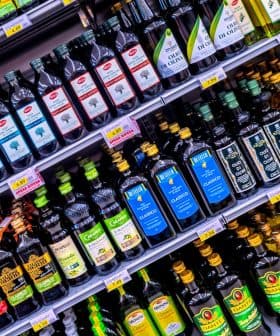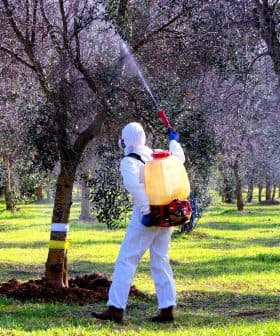Italian Production Reaches Record Low
Final figures on Italian olive oil production for the 2018-19 season were released by the Institute of Services for the Agricultural and Food Market.
The ISMEA reported that Italy experienced a historic low in olive oil production during the 2018/19 harvest season, with a 59.2 percent decrease compared to the previous year, mainly due to extreme weather events affecting various regions of the country. Despite the production decrease, Italian olive oil quality remained high, as demonstrated by the country’s success in the 2019 NYIOOC World Olive Oil Competition, while prices of extra virgin olive oil fluctuated due to the poor harvest, leading to an increase in imports and stable exports.
The Institute of Services for the Agricultural and Food Market (ISMEA) has released the final olive oil production figures for Italy, which estimated that 175,000 tons were produced in the 2018/19 harvest season — the lowest output since 1990.
Representing a 59.2 percent decrease compared to last year, Italian olive oil production has hit a historic low. Ismea’s initial estimate was revised down by 10,000 tons after the harvest season had officially ended and all the production declarations were gathered by the Italian Agricultural Payments Agency.
The production decrease was mainly due to extreme weather events, which have become increasingly frequent throughout the world. Consequently, Italy has suffered from several poor harvests over the last decade and has seen several large fluctuations in production recently.
See Also:Olive Oil Production NewsThese fluctuations are evident enough when looking at the percentage variations in volumes between this year and last year. According to Ismea’s report, southern areas of the country suffered the most. Basilicata experienced a record 81 percent decrease in volume compared with the previous campaign. Meanwhile, Calabria saw a decline of 76.6 percent, Sicily endured a 66.2 percent decrease and Puglia experienced a 64.8 percent decline.
The situation was slightly different in central areas of the country, such as Liguria, which saw production increase by 17.5 percent. Tuscany and Umbria also experienced production increases of 31.3 and 40.4 percent, respectively.
Meanwhile, the north of the country experienced remarkable growth, with production figures more than doubling in some places. Lombardy experienced a production increase of 153 percent, while Piemonte saw its production rise by 155 percent. Veneto’s production increased more than three-fold, increasing by an incredible 221 percent compared to last year.
In the hardest-hit areas, production decreases meant some olive mills had to close as early as December, while others did not even open. Coldiretti, the association of farmers, and Italia Olivicola drew attention to the loss of working days by holding rallies in Rome demanding compensation for those impacted by the sector’s downturn.
However, the sharp decline in volume did not impact quality, as was seen in the results of 2019 NYIOOC World Olive Oil Competition in which Italian producers took home 152 awards, the most of any country.
See Also:The Best Italian Olive OilsIsmea’s report also showed how prices of extra virgin olive oil were impacted by the poor harvest. Starting in the summer, olive oil prices rose from €4.04 ($4.52) per kilogram to €5.60 ($6.27) before decreasing a bit in February. However, by April, prices rose again, reaching an average of €5.65 ($6.33) per kilogram due to abundant Spanish production and the progressive exhaustion of stocks of the higher quality product.
Prices of lampante oil, which are traditionally driven by the Iberian market, followed a declining trend until they reached the lowest levels in recent years.
The drop in production also stimulated demand for foreign imports of olive oil and lampante oil. At the end of 2018, Italy imported 512,000 tons of olive oil and an additional 38,000 tons of lampante.
Italy also maintained its role in the olive oil export market, ranking second after Spain, and earning an annual turnover of €1.48 million ($1.66 million) from 333,000 tons of exports. In spite of the poor production year, Italian exports remained stable, compared with the previous year, and olive oil exports to Australia, Canada, Brazil, Taiwan, South Korea, Austria, the Netherlands, the U.K., Russia, Sweden, Switzerland and Japan increased.









